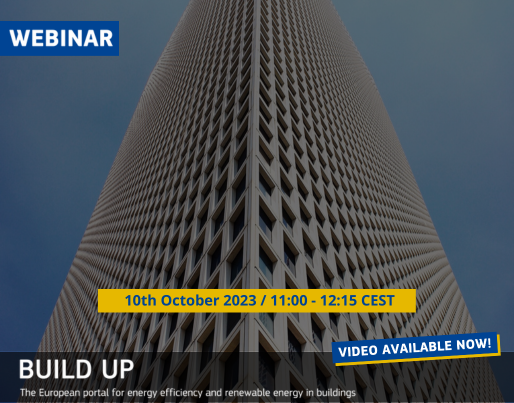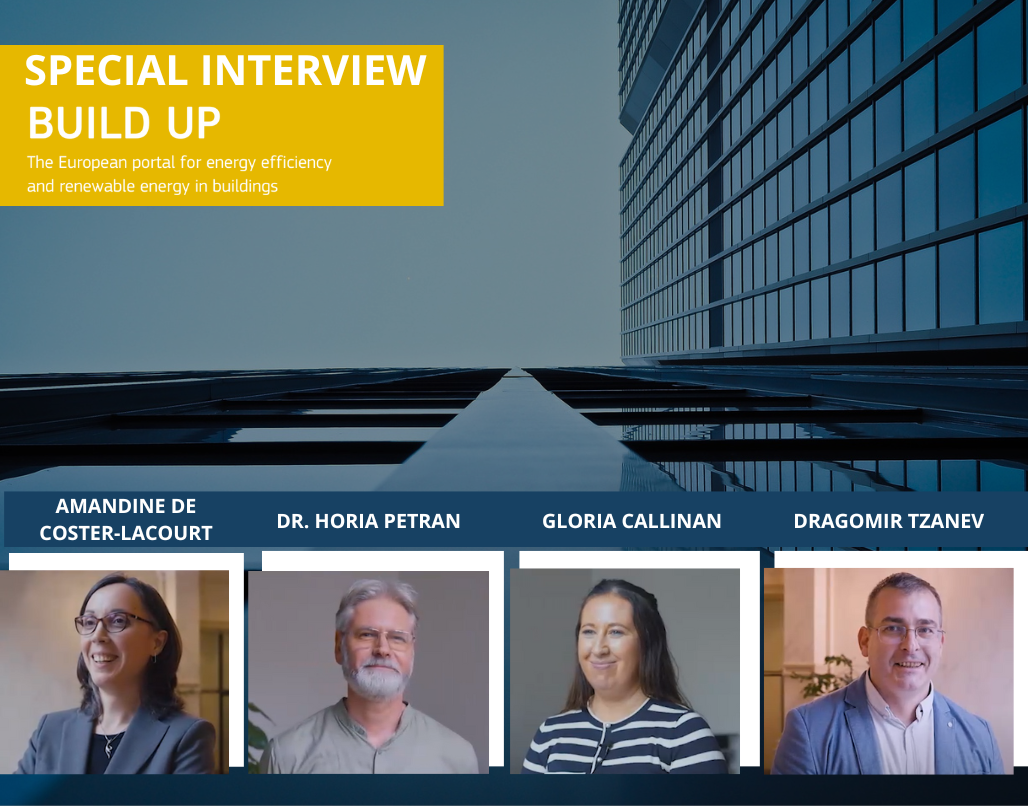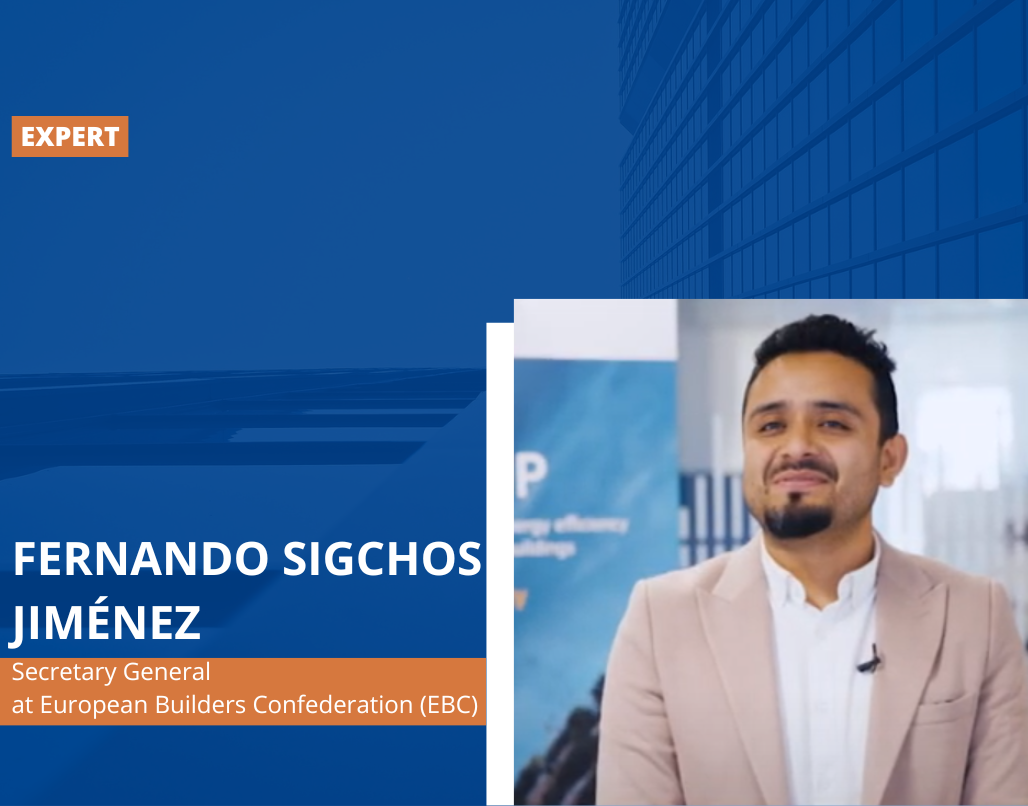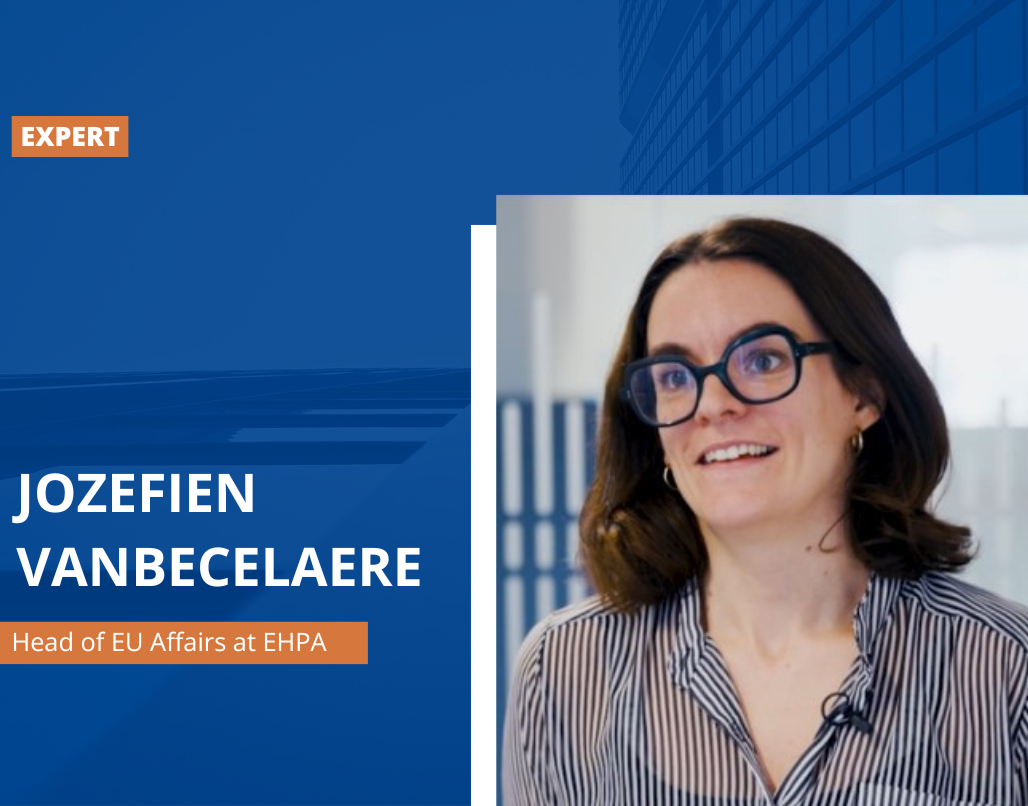Building Renovation at District Level: Combining Energy Efficiency & Renewable Energy Sources

Building Renovation at District Level: Combining Energy Efficiency & Renewable Energy Sources
On Tuesday 10th October, BUILD UP had the pleasure of hosting a webinar co-organised by IEA EBC Annex 75 and BUILD UP, entitled “Building Renovation at District Level: Combining Energy Efficiency & Renewable Energy Sources”. The purpose of the webinar was to present the main findings and recommendations from the IEA EBC Annex 75 project, showing the potential of district approaches for cost-effectively decarbonising the building sector. To do so, four key aspects of the project were presented and discussed:
- The IEA EBC Annex 75 methodology
- Barriers and Drivers for energy efficient renovation at district level
- Policy instruments to support district renovations, and
- Business models and models for stakeholder dialogue
The session began with an introduction and brief overview from of the IEA Annex 75 project from Manuela Almeida, Associate Professor at Pl University Minho, Portugal. The goals of the project were:
- To investigate cost-effective strategies for reducing carbon emissions in buildings at the district level, combining energy efficiency measures and measures that promote the use of renewable energy.
- To provide guidance to policymakers, companies working in the field of energy transition, and building owners to cost-effectively transform the existing building stock into low-emission and low-energy solutions.
Manuela Almeida: “Renovation at the district level can bring opportunities but can also be very challenging when compared to building level. Finding this balance between renewable energy supplies and energy efficiency measures… is more complex district level than for individual buildings, but may also bring larger benefits”
Following Manuela, Roman Bolliger, Project Manager at INDP in Switzerland discussed optimisation methodology and strategy development for building renovation at district level combining energy efficiency and renewable energy systems. This was illustrated with the help of a case study from Luzern, Switzerland.
Roman Bolliger: “It could be assumed that in District Heating projects there is less potential for energy efficiency measures and whether at all it makes sense to carry out District Heating projects or District projects compared to individual building renovation projects in terms of cost-effectiveness”
Erik Johansson, Associate Professor at Lund University, Sweden continued with an overview of barriers and drivers for energy efficient renovation at district level. Barriers and drivers were found in seven categories including policy, legal, economic, social, communication, technical, and knowledge and training.
Following Erik, there was a short Q&A session with questions including questions about the availability of databases for researchers, what are the experience of developing calculation tools at the district level, and if there are differences in policy and legal barriers between European countries.
Following the first Q&A, Erwin Mlecnik took the floor to discuss policy instruments in the framework of the Annex 75 project.
Erwin Mlecnik: “There is a lot happening regarding heat grid development, but there is a need for policy instruments to really achieve breakthroughs regarding building renovation at district scale.”
Thaleia Konstantinou, Associate Professor at TU Delft in the Netherlands and BUILD UP Ambassador continued the session by discussing business models in the framework of the project. Specifically, it is important to identify key characteristics of business models that enable upscaling from building level to district level renovation, and to better understand the various opportunities different stakeholders have within the business models.
Thaleia Konstantinou: “A lot of the business models barriers relate to financing and stakeholder.”
Finally, Manuela Almeida rounded off the presentations by summarising the Annex 75 main recommendations.
The session closed with another short Q&A session with questions about business models including how they are used to track the progress of energy efficiency renovations at the district level over the long-term, what to do if ownership is fragmented.
IEA EBC Annex 75_webinar_Oct 10_Final Slides.pdf
English (13.01 MB - PDF)

